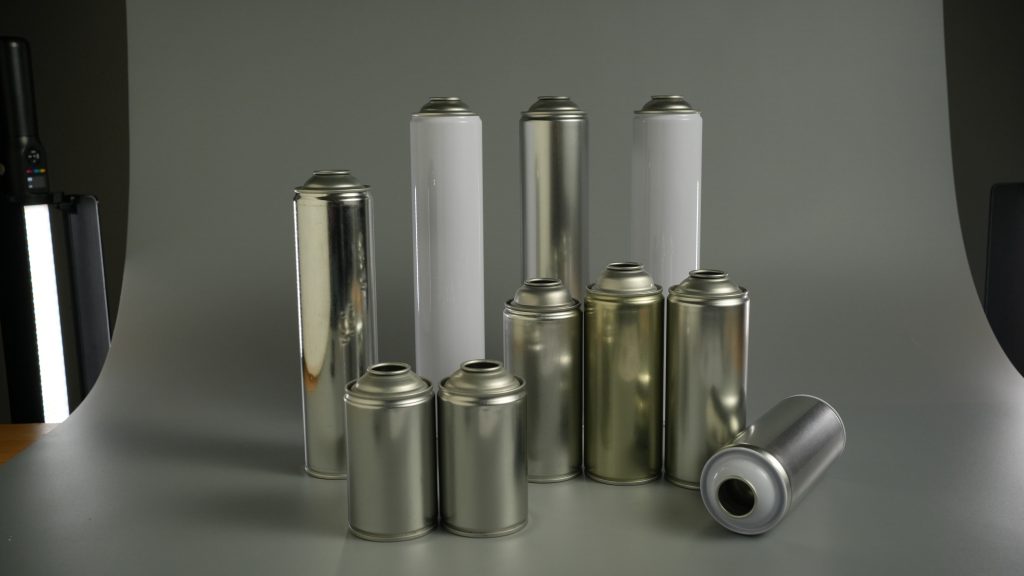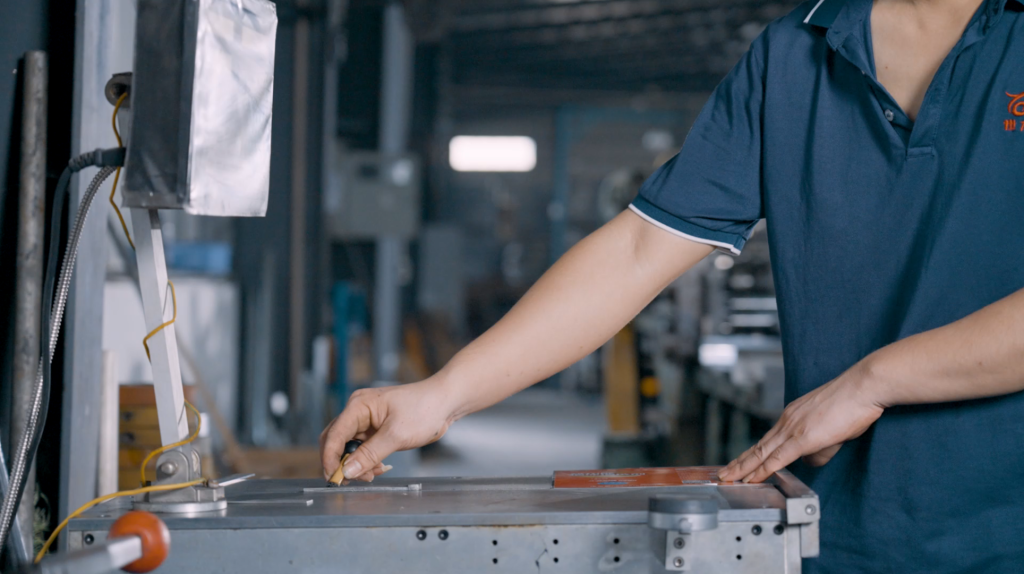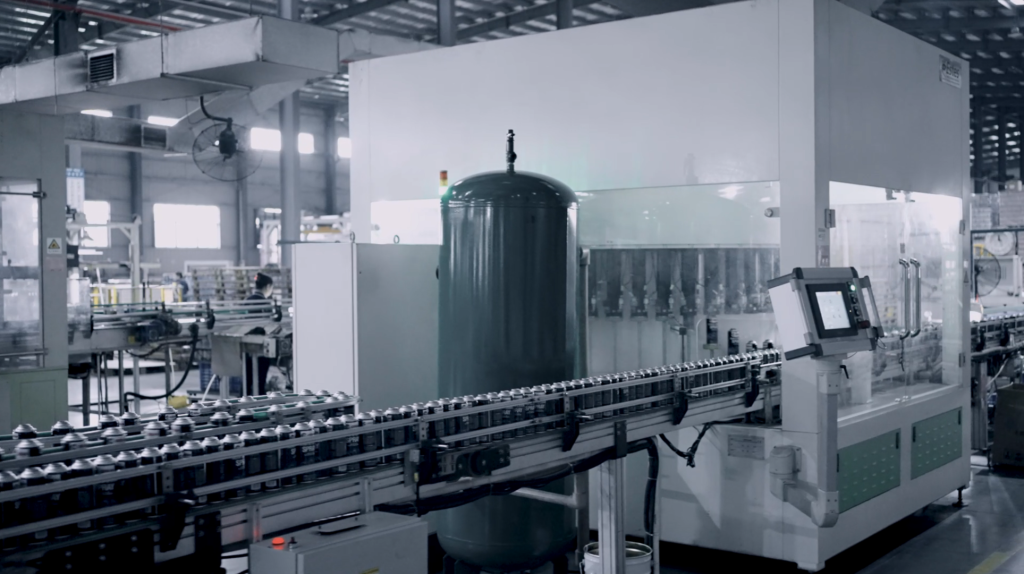
In the intricate realm of packaging, aerosol cans have carved out an indispensable niche. From the deodorants that keep us fresh throughout the day to the paints that breathe life into our creative projects, these compact containers have seamlessly integrated into our daily routines. But have you ever paused to consider the meticulous process that goes into filling these cans with the ideal combination of liquid and gas? Let’s embark on an exploration of the captivating mechanics of aerosol can filling machines, with a particular emphasis on those engineered for tinplate aerosol cans, similar to the customized products our company offers.
The Dual – Phase Filling Process
The art of filling aerosol cans unfolds in a precisely choreographed two – step sequence. The process commences with liquid filling, followed by the introduction of gas or propellant. This separation is not arbitrary; it’s a critical requirement dictated by the unique pressure demands of aerosol products.
Liquid Filling: The Delicate Operation
Envision a highly precise procedure where a specific quantity of liquid must be transferred into a small can. Liquid filling devices execute this task with finesse at room temperature and normal pressure. These devices employ a liquid metering cylinder and a filling head. The metering cylinder functions as a sophisticated measuring instrument, guaranteeing that the exact volume of liquid enters the can.
It’s worth noting that the accuracy of liquid filling can significantly impact the performance of the final aerosol product. Insufficient liquid may result in an ineffective spray, while an excess could lead to leakage issues.
Gas Filling: Infusing the Power
Once the liquid is carefully placed within the can, it’s time to introduce the gas or propellant—the element that gives the aerosol its propelling force. The gas filling device injects a measured amount of pressurized gas (or liquefied gas) into the sealed can via a valve at the top.
The can must be sealed before gas filling to prevent the gas from escaping and to maintain the appropriate internal pressure, which is essential for the proper functioning of the aerosol product.

Safety First: The All – Pneumatic Design
Given that many aerosol products contain flammable or explosive substances, safety is of paramount importance in the design of filling machines. To mitigate the risk of sparks that could potentially trigger a hazardous situation, these machines are equipped with an all – pneumatic transmission system. By relying on compressed air instead of electricity, the risk of electrical sparks is effectively eliminated.
Common flammable substances found in aerosol products, such as hairsprays and air fresheners, include ethanol and propane. Awareness of these substances underscores the importance of safety in the manufacturing process.
Components of a Simple Aerosol Can Filling Machine
Let’s take a detailed look at the essential components of a basic aerosol can filling machine:
| Component | Function |
| Liquid Filling Machine | Measures and fills the liquid into the can |
| Sealing Machine | Seals the can to prevent gas leakage |
| Gas Charging Pump | Sucks in the propellant and pressurizes it |
| Booster Pump | Enhances the flow rate and pressure of the liquid |
| Table and Frame | Provide a stable base for the machine |
| Pneumatic Components | Control the movement and operation of the machine |
The Filling Process in Action
Liquid Filling Step – by – Step
- Switch Activation: When the liquid filling switch is turned on, the double – air – controlled directional valve in the liquid metering cylinder changes direction.
- Valve Opening: A small cylinder opens the valve of the filling head, allowing the liquid to flow.
- Piston Movement: Air enters the upper chamber of the power cylinder in the metering cylinder, pushing the piston downward. This action forces the liquid in the liquid cylinder through the filling head and into the aerosol can.
- Filling Termination: As the piston reaches a predetermined point, it triggers a signal valve, which changes the direction of the double – air – controlled directional valve, halting the filling process. The filling amount can be adjusted by rotating the adjustment knob on top of the metering cylinder to modify the piston’s stroke.
Sealing Process: Ensuring a Secure Seal
- Switch Activation: Activating the sealing switch causes the double – air – controlled directional valve of the sealing machine to change direction.
- Sealing Head Movement: The upper chamber of the lifting cylinder fills with air, pushing the piston down. The sealing head then presses against the can valve.
- Sealing Claw Operation: As the bottom of the sealing cylinder moves down and touches a signal valve, the sealing claw opens. After the top block of the sealing machine hits a reset signal valve, the piston of the lifting cylinder rises, and the sealing claw closes, ensuring a tight seal.
Gas Filling: The Final Step
- Propellant Suction: Controlled by compressed air and pneumatic components, the booster pump draws in the propellant from a steel cylinder or storage container and pressurizes it into a high – pressure liquid.
- Gas Metering: This liquid propellant enters the gas metering cylinder for precise measurement.
- Gas Injection: When the gas filling switch is opened, the double – air – controlled directional valve in the gas metering cylinder changes direction. The filling head presses against the can, and the propellant is injected into the sealed can through a nozzle.
In conclusion, aerosol can filling machines represent a remarkable feat of engineering, seamlessly integrating precision, safety, and efficiency. At SAILON, we take great pride in customizing tinplate aerosol cans that are designed to work harmoniously with these advanced filling machines. The next time you reach for an aerosol product, spare a thought for the intricate process that has gone into filling that small but mighty can.


